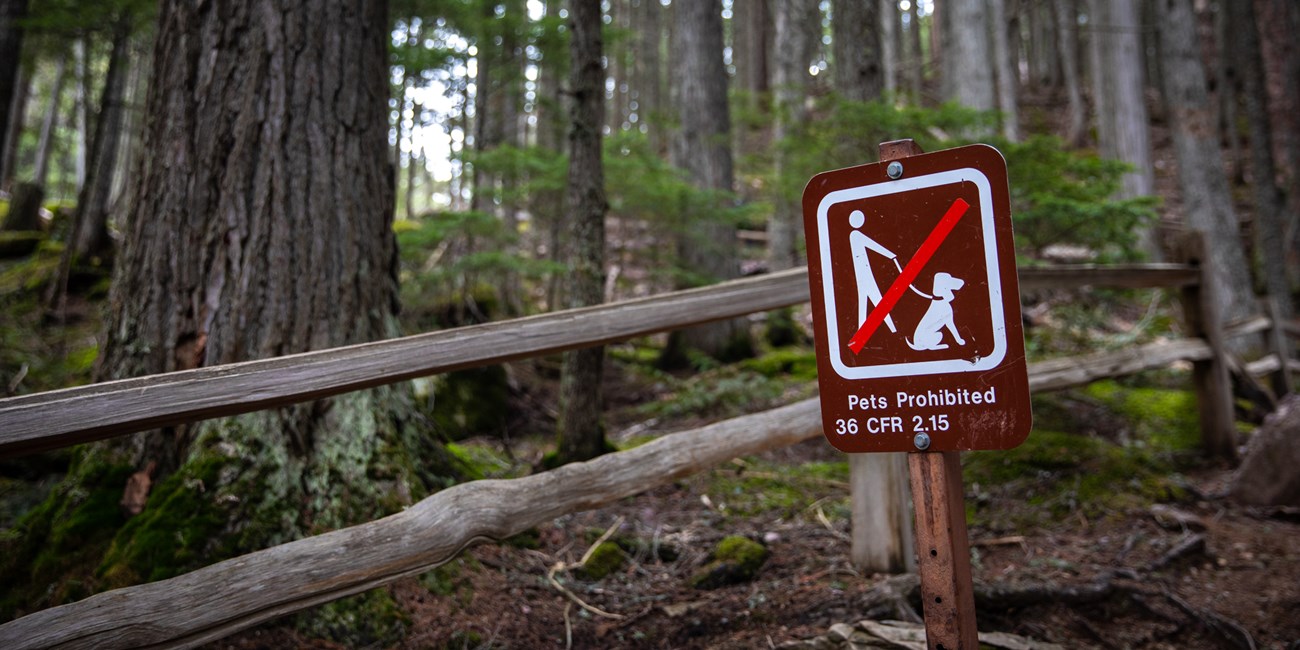
The 2010 revision to Title II of the Americans with Disabilities Act (ADA) defines a “service animal” as a dog that has been individually trained to do work or perform tasks for the benefit of an individual with a disability, including a physical, sensory, psychiatric, intellectual, or other mental disability. The work or task a dog has been trained to provide must be directly related to the person’s disability. A dog that is in training to become a service animal is not yet considered a service animal. Comfort or emotional support animals do NOT qualify as service animals. The key difference between a service animal and a comfort animal is that a service animal is trained to do work or perform tasks, whereas a comfort or emotional support animal is not.
Visitors with service animals may obtain a safety briefing at most wilderness permit stations. The briefing includes important information about the potential risks associated with taking a service animal onto the trails in Glacier.
Wilderness Permit Office Locations that Provide Service Animal Briefings:
Where domestic animals and wildlife overlap, there is a possibility of exchanging diseases between the two groups. The park’s canids (wolves, coyotes, and foxes) are vulnerable to domestic diseases such as parvo virus, canine distemper, rabies, and mange. Likewise, it’s possible for domestic dogs to acquire these diseases from wild animals. The Service Animal Safety Briefing provides park managers with reasonable assurance that domestic service animals travelling in the backcountry are free of diseases that could harm wildlife.
Please be aware that having a service animal on trails may put you at increased risk for confrontations with wildlife, particularly wolves and bears. There are recorded instances of domestic dogs killed by bears, mountain lions, and coyotes within the park and numerous instances of dogs killed by wolves and bears outside of Glacier. Wolves are very territorial and may act very aggressively toward domestic dogs, putting both you and your animal in danger.
In addition, streams and rivers pose a special risk to all animals. Cold and fast-moving water can cause hypothermia, drowning, and giardia poisoning if your animal decides to take a drink or go for a swim. |
Last updated: June 20, 2024
